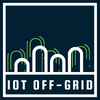Learning Objectives:
- Discover the extensive list of potential IoT use-cases within the agricultural field
Here are some examples of sensors that can be integrated with IoT-based systems for agriculture and smart farming:
| Sensor | What they measure | How IoT integration benefits |
| Light | . Light intensity . Duration of light | . Enables identification of best planting times . Allows precise control in controlled environments like greenhouses |
| Soil moisture | . Moisture content | . Optimization of irrigation schedules . Avoiding over-watering or under-watering . Enables water usage efficiency |
| Water quality | . Temperature . pH . Dissolved oxygen . Nutrient levels | . Real-time monitoring of water quality . Identification of potential pollution sources, such as agricultural runoff or sedimentation. |
| Livestock monitoring | . Body temperature . Activity level . Feeding habits | . Early detection of health issues . Improving herd management |
| Pest control | . Noise emitted by pests | . Triggers alerts and actions to minimize damage . Reduces the dependence on pesticides |
| Greenhouse gases | . Carbon dioxide . Methane . Other greenhouse gases | . Assessing the environmental impact of agricultural practices . Helps make informed decisions to mitigate climate change |
| Precision agriculture using GPS | . Planting . Fertilizing . Harvesting | . Optimizes resource usageMinimizes environmental impact |
| Supply chain | . Agricultural products in the supply chain | . Ensures products are transported and stored under optimal conditions . Reduces spoilage and improving overall product quality. |
In addition to the aforementioned sensors, adapting some of the environmental monitoring sensors described in Week 3 (that specialize in monitoring air quality, soil erosion, and weather patterns) would be optimal for smart farming.
Watch the below video to get a better idea to learn what IoT adaptation means for farmers, and for the agricultural industry:
